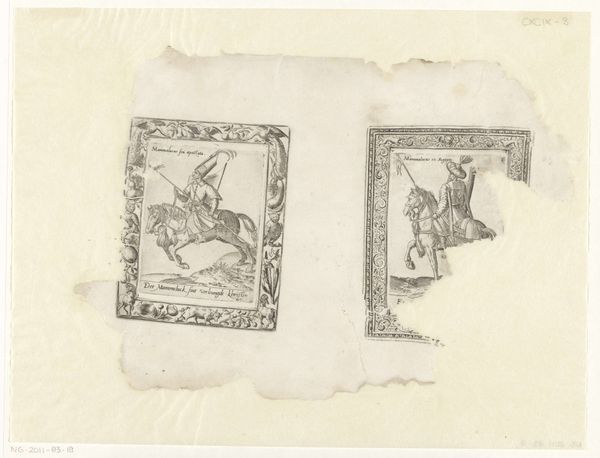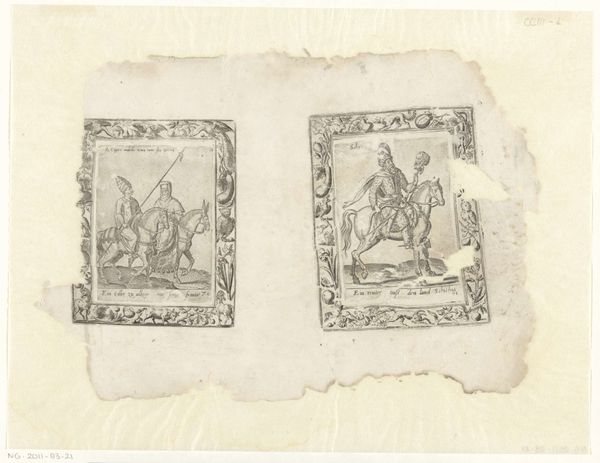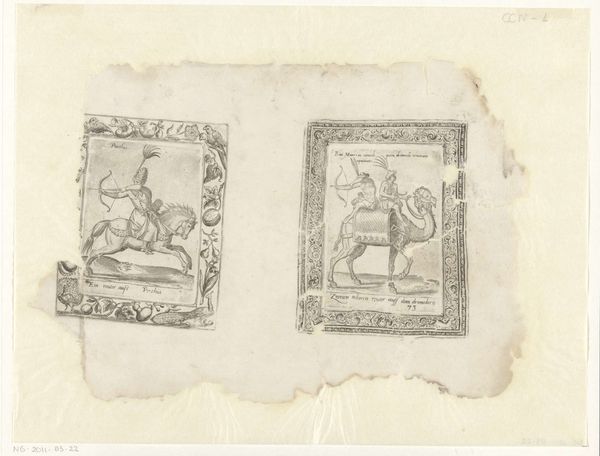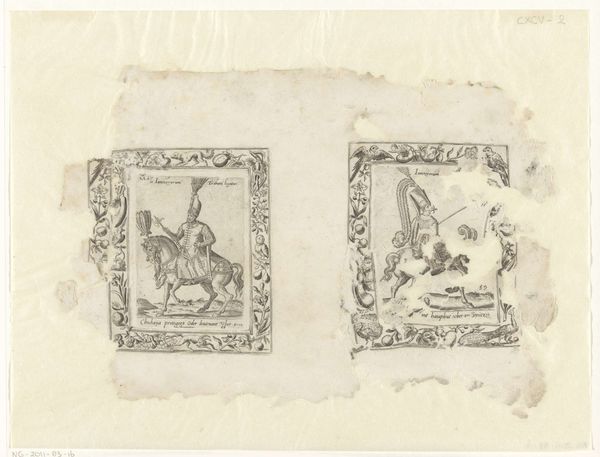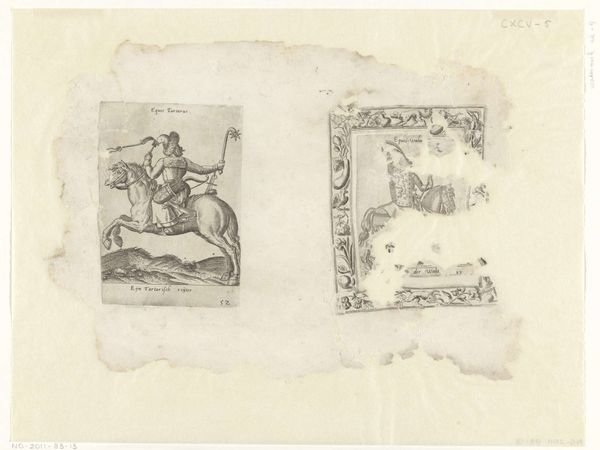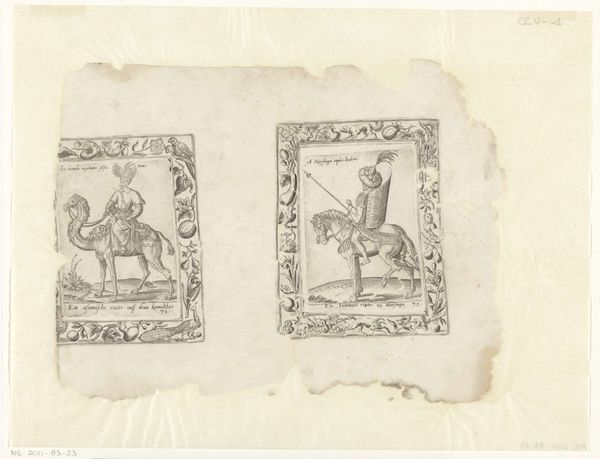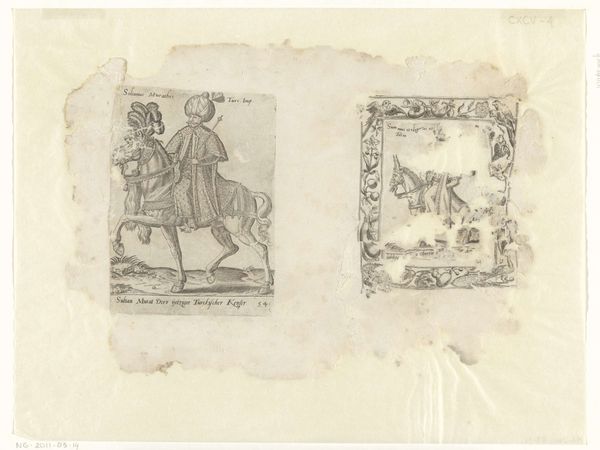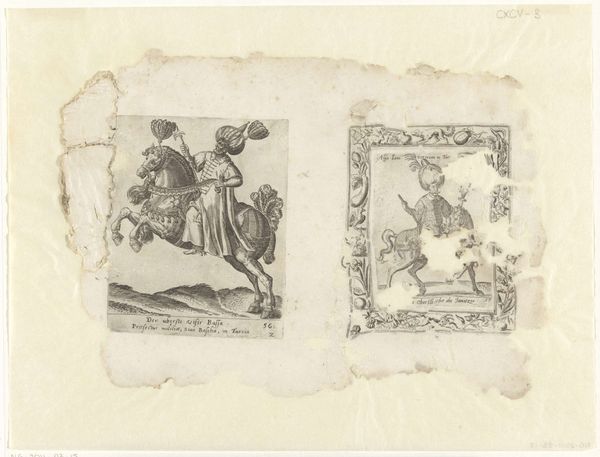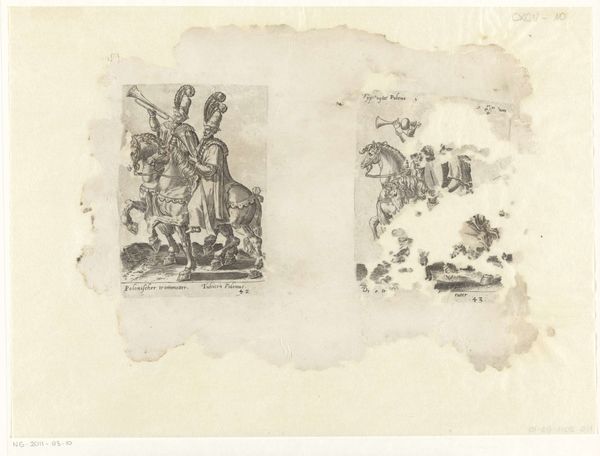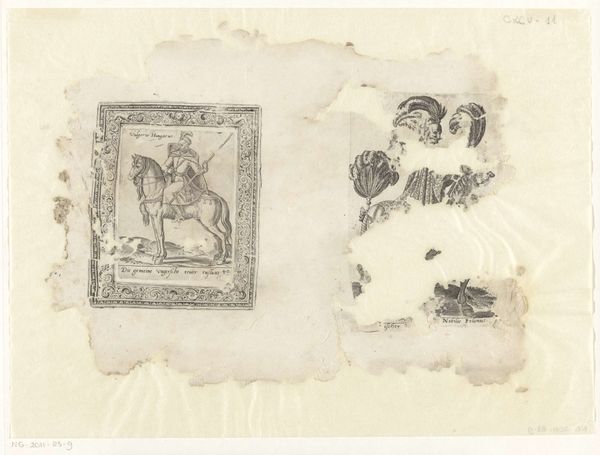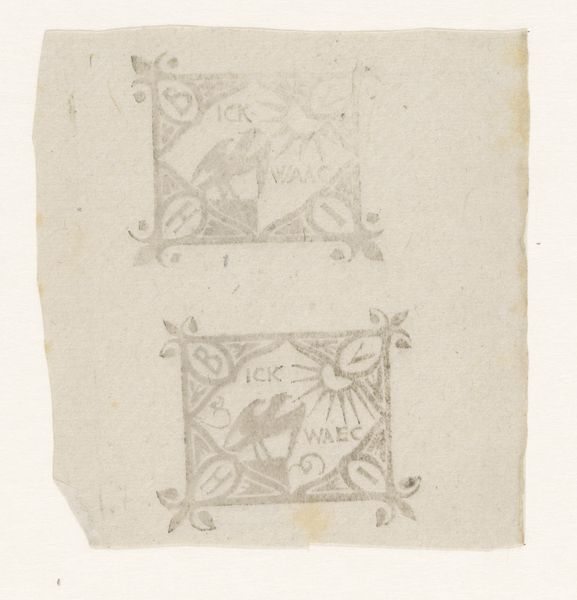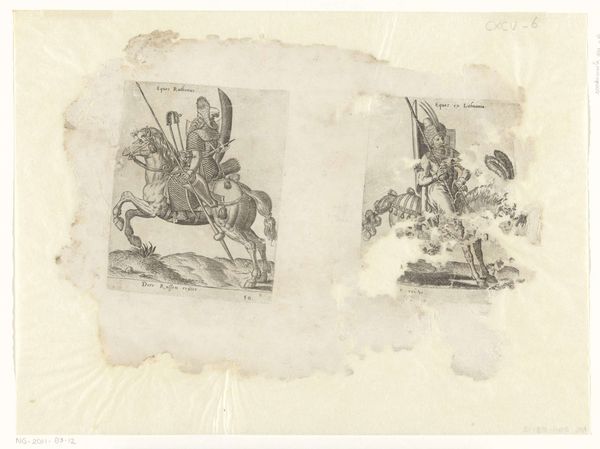
drawing, print, ink, pen, engraving
#
drawing
# print
#
pen sketch
#
old engraving style
#
11_renaissance
#
ink
#
pen work
#
pen
#
northern-renaissance
#
engraving
Dimensions: height 235 mm, width 346 mm
Copyright: Rijks Museum: Open Domain
Editor: So, here we have Abraham de Bruyn's "Arabische hoofdman en ruiter," made between 1576 and 1596. It's an ink and pen drawing, more specifically an engraving, at the Rijksmuseum. It strikes me as…exoticized? The figures are clearly not rendered with accuracy, so it feels less like documentation and more like…a fantasy. What's your read on it? Curator: That's an interesting observation! The "exoticized" feel points to the cultural context of its creation. Consider the role prints played in disseminating information – and misinformation – during the late 16th century. How do you think images like these contributed to European perceptions of the "Orient," and more specifically, Arabia? Editor: Well, seeing it as a print makes me consider its circulation. These images would be distributed and seen widely, solidifying potentially inaccurate depictions as the norm. Perhaps perpetuating stereotypes about the “Arabische hoofdman”? Curator: Precisely. The artist, de Bruyn, likely never encountered these subjects firsthand. His visualization depended on other sources. The framing of the figures within decorative borders also suggests that this print may have been part of a series meant to document "foreign" cultures. Editor: So, this isn't really about these individual figures; it's more about European perceptions and projections. Curator: Exactly! It becomes a study of European artistry influenced by emerging colonial perspectives, more than accurate portrayals. It’s important to understand the social lens it gives us. How does seeing the work through that lens impact your view of the piece and art more broadly? Editor: I see how historical context deeply changes our interpretations of this kind of art. I had looked at it from an aesthetic POV, but viewing this piece as cultural commentary on society opens it up in a way that goes way beyond my initial impression. Thank you for the insight! Curator: It has been great discussing art with you. Now I know much better where your interests and expertise lies.
Comments
No comments
Be the first to comment and join the conversation on the ultimate creative platform.
